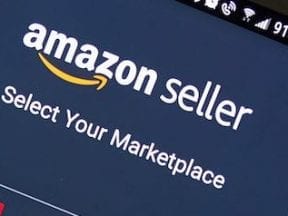Walmart’s U.S. ecommerce sales in the last quarter of 2020 increased by 69 percent year-over-year while its total sales grew only 7.3 percent. The message is clear: future growth will depend on ecommerce.
Emboldened by a pandemic-driven increase in digital sales, Walmart has decided to challenge Amazon’s dominance in the ecommerce arena. Walmart is presumably the only retailer with the financial resources, logistical prowess, and size to do this.
In its two-pronged approach, Walmart is trying to lure Amazon’s sellers and expand its own marketplace to international sellers. The company is reaching out individually to a few of Amazon’s largest sellers. It has already contacted Perch, one of the large aggregators that buy smaller Amazon sellers.
Sell on Walmart?
According to a survey by Jungle Scout, an Amazon-seller tool, 39 percent of Amazon sellers are considering Walmart this year. Those looking to expand tend to be established FBA merchants, Fifty-four percent of these sellers have more than 10 active product listings on Amazon. Many Amazon sellers have become disenchanted with the Amazon Marketplace. Some have been kicked out without explanation. Objections to Amazon’s actions often take a long time to resolve.
The survey shows that those sellers interested in Walmart tend to list products in the top-selling Amazon categories such as home and kitchen, toys and games, and sports and outdoors. Walmart.com and Amazon have the same general customer base.
Walmart does not charge sellers monthly fees, while Amazon professional accounts cost $39.99 per month. Walmart charges sellers a fixed referral fee per sale (typically 15 percent of the product’s sale price) plus additional fees if they use Walmart Fulfillment Services, which launched last year.
While Walmart does not publicize its fulfillment fee structure, it states that the storage and fulfillment fees are based solely on the product’s weight and dimensions.

Fees for Walmart Fulfillment Services are based on weight and dimensions.
It is still easier to set up an account with Amazon. Anyone can register and have a product listed within a few days. In contrast, the Walmart Marketplace requires a potential seller to apply and be vetted. Walmart sends an invitation to those who meet the qualifications. Sellers must have a U.S. tax identification number.
Walmart’s Strategy
According to Marketplace Pulse, Walmart now has around 80,000 marketplace sellers, a minuscule number compared to Amazon’s 9.8 million, although only 1.9 million are active.
Walmart wants to grow as quickly as possible. In February, Walmart announced a partnership with BigCommerce, an ecommerce platform. Walmart said the partnership will allow it to quickly increase the number of products it offers consumers from the 85 million now in stock. BigCommerce sellers can use an app called “Walmart Connector for BigCommerce” to easily integrate their stores with Walmart Marketplace.
To attract new sellers, Walmart is also simplifying its onboarding process, which had been criticized as burdensome. Walmart is also promoting a limited-time offer called New-Seller Savings that provides a 30-day waiver on sales commissions to all merchants who join the platform by March 31 and go live by May 1.

Unlike Amazon, which allows anyone to register and sell on its marketplace, Walmart vets potential sellers.
Walmart recently announced it is opening its marketplace to foreign sellers. Until now only merchants with a U.S. address could participate. Merchants will be vetted by Walmart’s global trust and safety team. Walmart is targeting Chinese retailers and manufacturers who offer low-to-moderately priced goods popular in the U.S. The surge in ecommerce in the U.S. due to the pandemic has made the country an appealing venue for Chinese vendors.
Walmart Advantages
Walmart has 4,756 retail U.S. stores. They can be used for in-store pick-up, curb-side delivery, and customer returns. By contrast, Amazon’s Whole Foods chain has only 500 U.S. stores.
Earlier this month Walmart dropped its $35 minimum order requirement to qualify for its express two-hour delivery service, which is available in close to 3,000 locations, reaching 70 percent of the U.S. population. The stores are crucial to the two-hour delivery service, which is primarily for produce, pantry items, household essentials, and other consumables. Two-hour service typically costs $10 on top of a standard delivery fee ranging from $7.95 to $9.95.
However, Walmart waives the entire delivery fee if consumers subscribe to Walmart+, which costs $98 a year or $12.95 a month. Walmart+ is a competitor to Amazon Prime, and though Walmart does not offer videos and music, it does provide a five-cent-per gallon fuel discount at Walmart and Murphy gas stations and member pricing at Sam’s Club gas stations.
Walmart is a long way from catching Amazon. But it has made substantial progress. Its online shoppers, unlike its brick-and-mortar customers, are similar to Amazon’s. And with a growing range of online goods and services, Walmart could challenge Amazon’s dominance.




